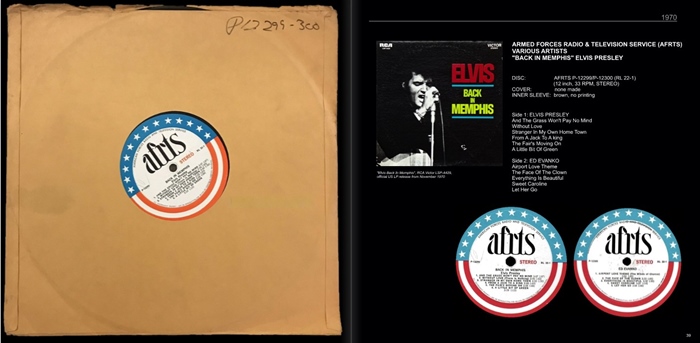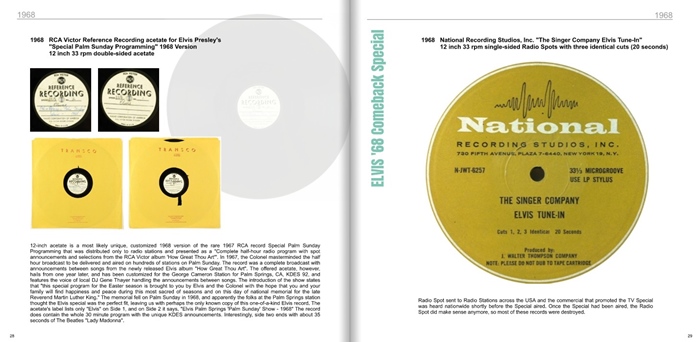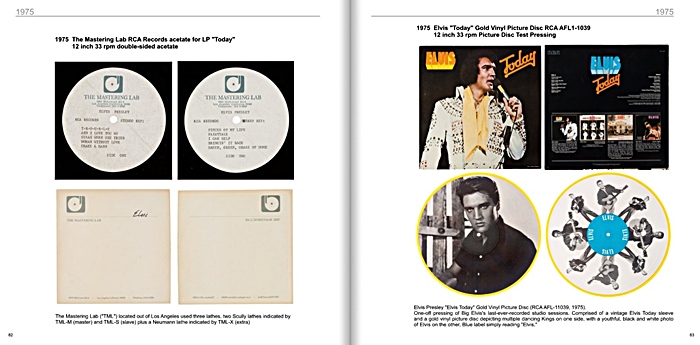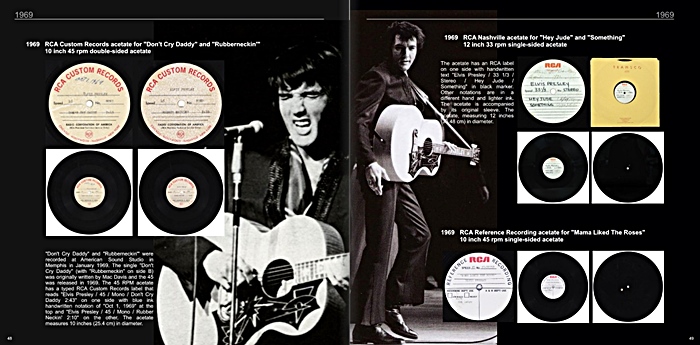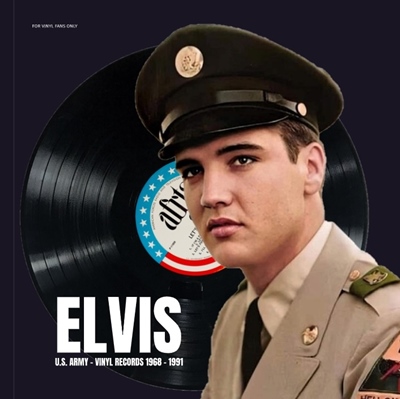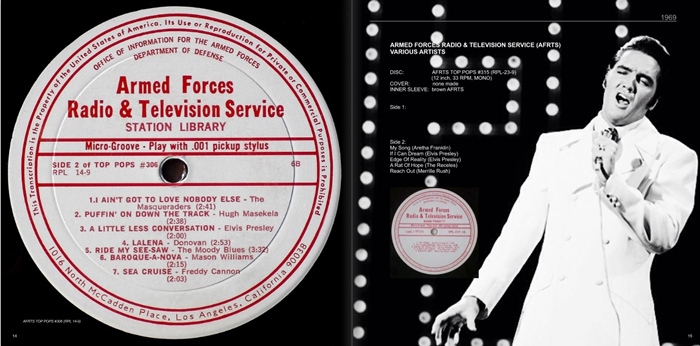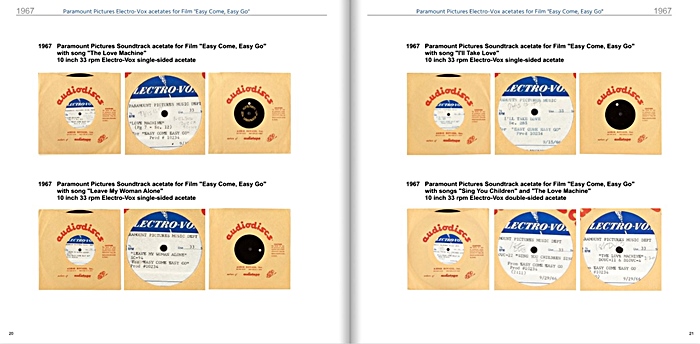 |
 |

While serious collectors will be familiar with Piotr Soczynski’s phenomenal work in documenting little known parts of the Elvis recording catalog, most fans will not. This is a great pity, as Piotr, who lives in Poland, has already published five of the best Elvis books in 2021, with two more volumes due later this year and in 2022. These books are:
The first four volumes sold out quickly earlier this year, while the more recent first volume of Piotr’s Eastern Europe vinyl trilogy is selling fast. The depth of information, glorious visuals, and strong, clean book design have resulted in fascinating “coffee table” releases which will please (amaze) both collectors and the general fan. Piotr recently took time out to discuss Elvis in Poland and his series of books which are an important narrative-visual record of little understood Elvis vinyl releases.
EIN: Piotr, please tell us a little about who Piotr Soczynski is and how you became an Elvis fan? PS: First of all, thank you for the interest. It is a great honor for me. It all started in the early 1980s. In 1982, I heard Elvis’ songs from the album "Golden Records Vol. 2" (like "I Need Your Love Tonight", "A Big Hunk O 'Love" - I especially remember "I Beg Of You"), and soon after that, religious songs from the album "His Hand In Mine". I was intrigued by the voice of the singer, the variability of styles and performances. This is how it started and continues to this day. I’m 51 years old, I live in Poland and I have been an Elvis fan for about 40 years. EIN: You live in Poland. How popular has Elvis been in Poland and what is the Elvis scene like there in 2021? PS: Because of the political situation, Elvis was never promoted in Poland (and the whole Eastern Europe). Music with Western roots (not only rock, but also jazz or twist) was regarded as a tool of American imperialism. What is more, Presley’s records were not released in Poland! But as if out of contrariness, Elvis was very popular in Poland. Records were brought from the “West”, and copied to tapes (using home tape recorders). You could listen to Presley on the radio, and presenters of the Polish Musical Radio did it regularly. Thanks to them for that! Another sign is the presence of Elvis’ followers. Polish musicians sang and played Presley’s pieces. It’s worth mentioning that in the beginnings of his career, Krzysztof Komeda himself played songs from Elvis’ repertory. At present, the popularity of Elvis’ music has dropped a bit. He still has his followers of course. There are several active fan clubs. Cyclical meetings are organized. The scale of those events, however, is rather small. Unfortunately, neither the press nor the television or the radio promote Elvis’ music. EIN: Since early 2021 you have published five “hardcover” Elvis discographies with two more coming later this year and in 2022. How long have you been working on the series? PS: I have a great sentimental attachment to vinyl records. I’ve been collecting information and photos for over 20 years (or more). It takes around half a year to prepare a book (several hours of work a day). Graphic design for photos (records and covers), preparing descriptions, layout, etc. It all takes a lot of time.
EIN: Your two volumes on U.S. Army Vinyl Records featuring Elvis are something not many fans will be familiar with. These volumes include releases for: ➢ Armed Forces Records What attracted you to these releases as a theme for books? PS: The central theme of all books is… lack of such publications on the market and the will to share information with other fans. I am aware that the released 2 volumes of the “military records” may be incomplete. There are many factors to that. First, there is no complete catalogue of “military” records, no register was ever maintained. Records for military radio stations were released in small numbers, and a part of them would be destroyed once a radio broadcast was over. Employees of those radio stations would sometimes take the records home, where they would be eventually damaged or where they can still lie, forgotten, etc.
EIN: Similarly, your two volumes on U.S. demos and acetates are an area not covered in great detail by other researchers. Finding hundreds of demos and acetates, including for Elvis film soundtracks, must have been a monumental job. How did you go about uncovering so much narrative and visual material on what are quite obscure and rare releases? PS: As I’ve already mentioned, I love vinyl records! I’ve been collecting records and information since forever. The books would not have been created of course if it hadn’t been for the help of my friends from all over the world, who would often make available their collections and information. I would like to thank them all here.
EIN: When most fans see a reference to “demo” records, they think of those records submitted by songwriters to Elvis for consideration of him recording them. In relation to your books, could you explain what a “demo” record means? PS: Yes, this is one type of demo. But we also have demo records with songs sung by Elvis. Demos recorded during concerts, demos with interviews for radio stations, advertising demos, etc.
EIN: One of the things that surprised me was the number of Elvis albums that had “test pressings”. You include glorious images of the Pickwick label Let’s Be Friends Gold Vinyl test pressing (both sides) and others are Elvis Today, Elvis A Legendary Performer Vol. 1, and Elvis Country (royal green). Three questions here: ➢ What was the function of a “test pressing”? PS: I think there is no clear and explicit answer. Obviously, the main reason was to check the quality of sound of the recordings. But it wasn’t only about the sound. In the case of the editions of “Picture Disc”, the colour of the vinyl was also important, as the photo on the record had to be presented in “good” colours. A known case is “A Legendary Performer, Vol. 3”. First pressings on a black vinyl were not satisfying. Eventually, the colour of the vinyl was changed to blue. I’m not a specialist, unfortunately, but based on what Eric Ruggieri said, colour editions from the ‘70s were intended primarily for VIPs. They were pressed in several or a dozen or so copies. Some editions of “Picture Disc” seemed to be a kind of “fun” in the studio. The record with Elvis’ recordings and the photo of e.g. “Laurel and Hardy” prove it exceptionally well. I don’t think that all records were preceded by a “test pressing” release (this is proved for instance by the imperfect colour of the above mentioned record “A Legendary Performer, Vol. 3”).
EIN: You also found a very unusual album, 'Memories from the Elvis Years', which was a 12 inch 33 rpm Picture Disc Test Pressing. How did you find this and what can you tell us about it? PS: Unfortunately, I don’t have any additional information about this album at the moment. EIN: Piotr, EIN was amazed at many of the records in your books and painstaking research that you have undertaken. For instance, the various German Army Label records made for the U.S. Armed Forces, the various color (white, gold, red, green, violet) Vinyl Test Pressings of the Moody Blue album (and a rare Prototype “Picture Disc” pressing of the album), NBC Reference Recording acetate of I Want You, I Need You, I Love You, and the Audiodisc acetate with six songs from SUN Records, are just a few among your many stunning reveals. What have been some of your favorite discoveries? PS: Of course, the greatest joy are the albums from the 50s (demo & Army). SUN releases. A big surprise was the interesting edition of AFRTS "Christmas Album" from December 1958. The colorful editions of albums from the 70s are interesting. But also "Elvis Today" - picture disc with Elvis photos from the 50s! etc.
EIN: The various colored “Moody Blue” album Test Pressings are well known to collectors. You suggest the “violet” pressing is the rarest. Why is this? PS: According to my information, only one copy of the violet album was released. But I realise that I might be wrong!! EIN: Your latest series is a discography trilogy on Eastern European vinyl. What can fans expect in these, and when do you expect the remaining two volumes to be published? PS: Before I started working on the discography from the Eastern Europe, I didn’t think this work would be so hard. The discography was divided into 3 parts. The first one has already been released. The second one will include records from Yugoslavia (all singles, EP’s and LPs) and information about Romania (the records were never released in Romania). The third part will include records from Poland (sound postcards) and the Soviet Union (78 RPM single, EPs, flexis, sound postcards, 10” & 12” various artists LPs, X-Ray records, all editions of “That’s All Right” and more). The books contain a short history of rock and roll in each country, information about record labels, descriptions of records, and all editions of the records (and their re-editions) with Elvis’ songs. All variants of covers, labels, matrix numbers, extras, posters, photos, etc. are included. The second part will come out by the end of this year. The third one, hopefully, at the beginning of 2022.
EIN: In researching your books, were there any releases you were unable to obtain substantial information about? PS: I didn’t find a few photos of labels and covers that I know about (I’m thinking mainly about AFRTS releases) EIN: Piotr, the book design for each of your books is excellent - clean, crisp, informative, and inviting. Did you do all the design work? PS: Oh thank you ! Yes, I did everything myself. A lot of work, but how enjoyable work! EIN: The records presented in your books are incredibly rare and of major interest to serious collectors. Did you find information on how many copies of various records were printed/circulated? PS: Unfortunately, I have no such information, and I don’t think anyone can now specify the number of the copies released. It’s a pity nobody kept such registers. I found an interesting thing in the Soviet Union (this will be included in part 3 of the discography). In order to avoid stamp duties, record pressing plants would very often release records in small numbers of copies. They would pay the tax, and then press other identical records, with the same numbers of matrices and identical covers and labels.
EIN: There are hundreds, if not thousands, of records on display in your five (eventually seven) book series. Did any releases strike you as being particularly important in the Elvis (recording) story? PS: All records are very important! We should remember that e.g. demo records include complete versions recorded in the studio, and “military” records played on the radio were often the most beautiful experience for whole families during their long separation from their home country. And the records released in the Eastern Europe? They gave joy, brought smiles to people’s faces, connected them, and gave them a window to the world. They gave freedom! EIN: Do you have a favorite release in your series? PS: : I have a great sentimental attachment to books with vinyl records from Eastern Europe. EIN: We understand most of your already published books are already “sold out”. Which titles are still available? PS: Actually, only a book with discography from Eastern Europe is still available (a few copies). In the case of the others - I can order re-printing on request. EIN: How can interested fans obtain the books? PS: On “eBay” and through my FB fan page: www.facebook.com/elvis.presley.from.eastern.europe EIN: Once you complete your Eastern Europe Elvis trilogy, do you have any ideas or plans for further Elvis books? PS: I have no plans as yet! Now I’m focused on parts 2 and 3 of the discographies from Eastern Europe. EIN: Piotr: Is there anything else you would like to say to EIN readers? PS: I salute all EIN readers and all fans around the world. I wish you all health and well-being! TAKE CARE OF ELVIS! EIN: Piotr, on behalf of our readers, thank you so much for taking time to talk to us and enlightening us about, what are, little known, and fascinating, Elvis vinyl releases. We look forward to the remaining volumes in your important series.
|
|



